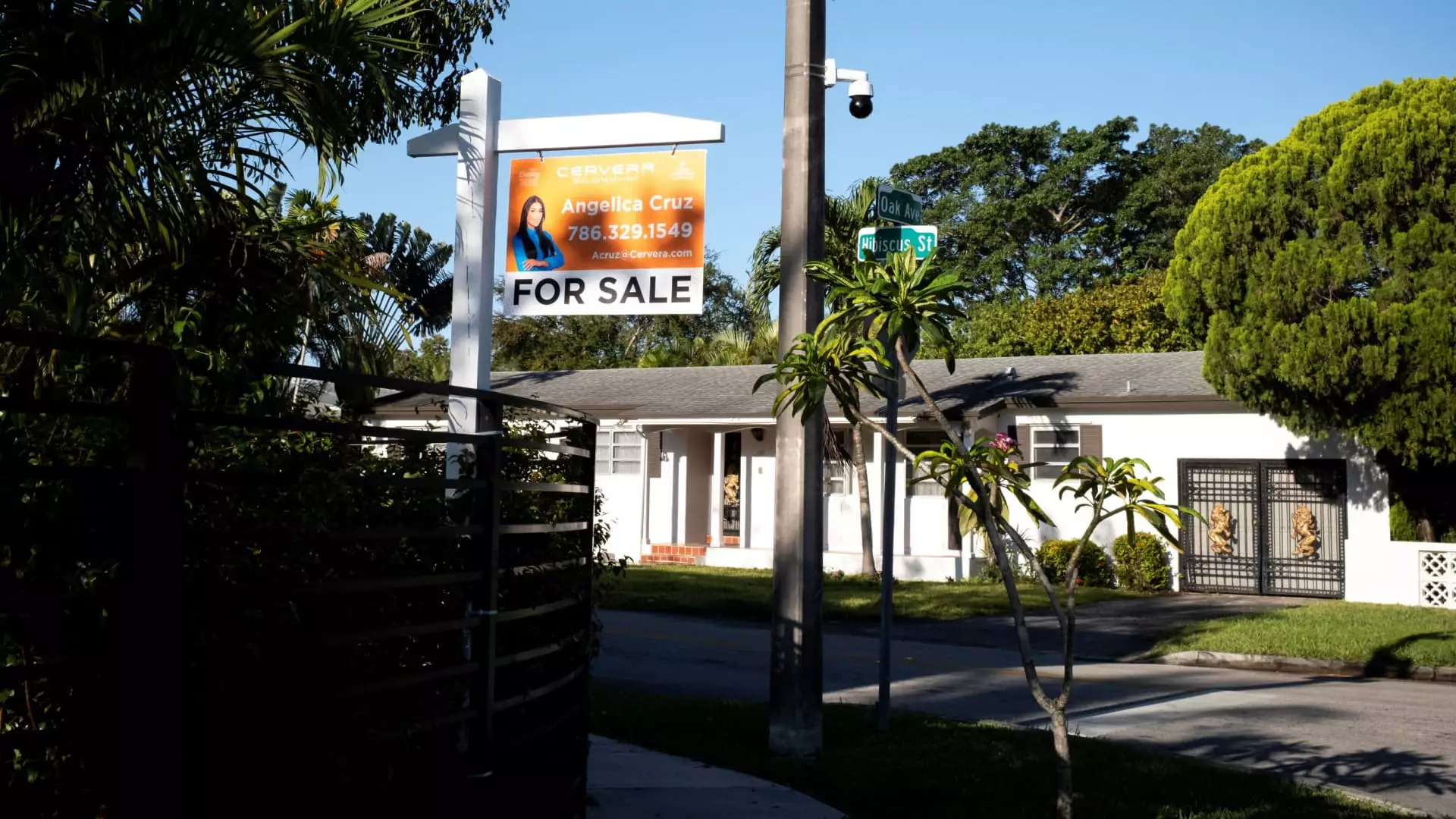The spring housing market is typically a season of renewal and optimism, a time when excitement over potential home sales is palpable. Unfortunately, this year is different, with higher mortgage rates and growing apprehension about the overall economic landscape dampening enthusiasm. The latest data from the National Association of Realtors reveals a staggering drop in existing home sales, which fell by 5.9% to 4.02 million units in March alone. This stat marks the lowest sales pace for March since 2009, exposing cracks in a market that is intended to be thriving during this crucial period.
Such a decline is alarming, especially considering that home sales in March were 2.4% lower than a year ago. The downturn was widespread, with all regions experiencing a slump. Notably, homes in the West—historically the most expensive area—saw the most striking decline, plummeting over 9%. Yet, paradoxically, this region is also the only one that witnessed a year-over-year uptick, largely fueled by promising job growth in the Rocky Mountain states. The message here is clear: the dynamics of this market are complex and nuanced, far from the simplistic narratives often presented in the media.
Affordability Crisis
As Lawrence Yun, the chief economist of NAR, noted, the sluggish home buying activity stems primarily from the affordability challenges posed by high mortgage rates. With the average 30-year fixed mortgage rate soaring above 7% during the peak period of contract signings, it’s no wonder that potential buyers are hesitant. Mortgage rates are often the tipping point when it comes to affordability, and the lingering high rates have dampened not just sales but also overall residential mobility, which hits at the heart of economic opportunity.
The implications are severe. A market suffering from low mobility signals an inhibition of economic growth and personal empowerment. The interwoven destinies of homeownership and upward socioeconomic mobility are a reality that can’t be ignored; a stagnant housing market holds back entire communities from thriving, perpetuating cycles of inequality. The data reveals a broader problem linked to high mortgage rates making it increasingly difficult for first-time buyers—those typically eager to climb the property ladder—to enter the market, as they constituted only 32% of transactions, far below the historic norm of 40%.
Inventory and Prices: A Balancing Act
Interestingly, despite this backdrop of declining sales, the inventory of available homes rose sharply, climbing nearly 20% year-over-year. By March, there were 1.33 million units available for sale—a figure that equates to a scant 4-month supply, still falling short of the 6-month threshold considered balanced. More importantly, the juxtaposition of rising inventory against falling sales is starting to significantly chill home prices, creating an unnerving atmosphere for both sellers and prospective buyers.
While the median price of an existing home sold in March was pegged at $403,700—still an all-time high for the month—the annual growth in home values has tightened considerably. With an increase of merely 2.7% from March of the previous year, this marks the smallest gain observed since the summer months. It appears the exuberant price hikes of the past are giving way to more stable, and in some respects, troubling trends.
The Investor’s Perspective
However, it’s not all doom and gloom for every player in this intricate arena. Investors continue to hold their ground firm, accounting for 15% of home sales—a figure that remains unchanged from last year. It’s essential to recognize that while investors may sidestep some of the affordability barriers plaguing first-time buyers, their steady presence may contribute to the further crowding of the market, scaling up competition and pushing prices.
Meanwhile, the slight dip in all-cash sales offers an insight into shifting priorities among buyers. With a reduced capability to pay with cash, potential buyers must lean more heavily on mortgage financing, making them even more susceptible to the volatility of interest rates. As property valuation reached a staggering $52 trillion, the figures point not only to the robust growth of homeowners’ balance sheets but also to the challenges those in lower economic tiers face when attempting to enter this valuable market.
As we march further into 2024, the sharp rise in canceled contracts already reported by Realtors raises significant red flags. The volatility sweeping through the stock market may further exacerbate these challenges and push the housing market deeper into a quagmire, leaving many left wondering what spring’s promise holds for the future of homeownership.

